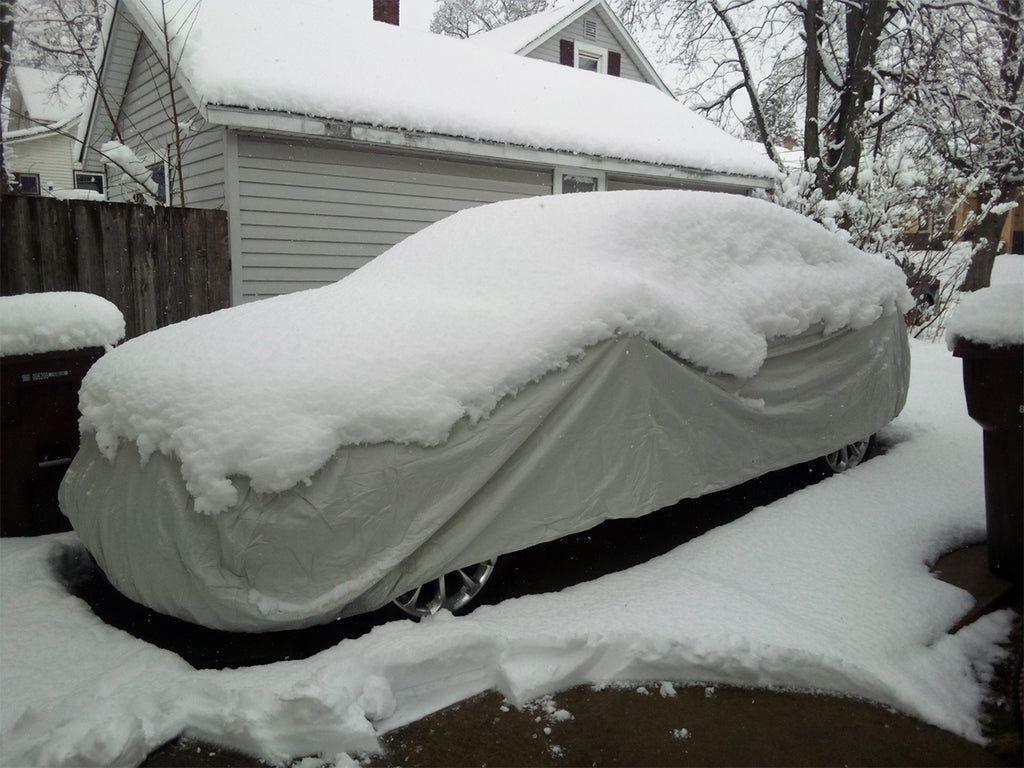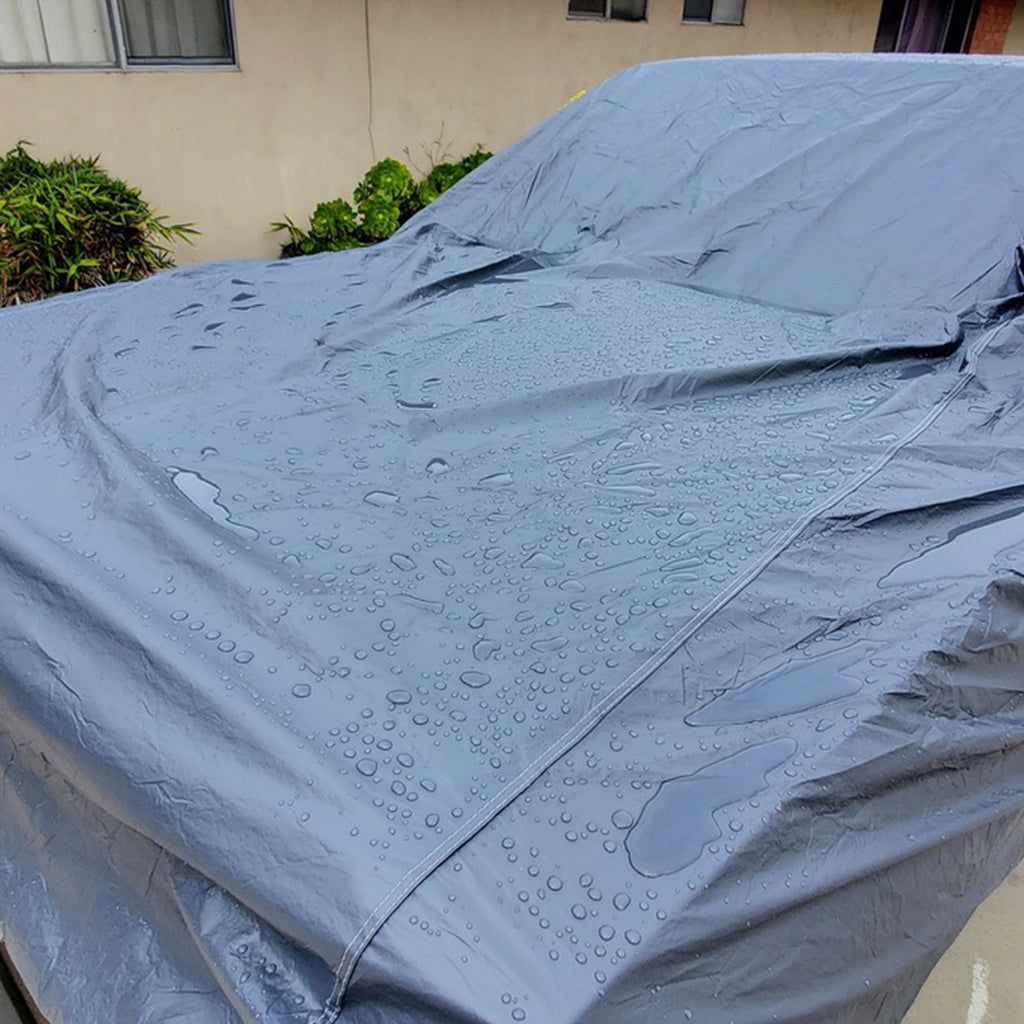Does Snow Damage Car Paint?
By John Funk, February 28, 2023

It is quite common for car owners to think that snow and ice wouldn’t be that bad for their vehicles. After all, it’s just cold water, right? What harm can it possibly do? It will just melt away eventually. However, in reality, snow can damage your paint if you don’t clear it off quickly.
When it comes to the winter season, snow, ice, and road salt are some hazardous elements that can cause some serious damage to your car’s paint, and removing them is not as easy as it might look.
Does leaving snow on your car damage it? Yes, it does. As snow builds up on your car, it tends to get heavy, adding pressure to your vehicle. Along with the pressure, the presence of road salt and pollutants in the snow can eat away at your vehicle’s paint over time and cause damage. It can also cause rust damage to your car’s body, frame, and other parts as well.
Removing snow from your car can be an unpleasant and daunting task; however, you should clear the snow off your car and it is advisable to do it at least once a day.
Does Snow Damage Car Paint?
Every vehicle is susceptible to damage when it is snowing. Let’s find out how winter snow can damage your beloved vehicle.
Damage Due to Moisture and Temperature Variation
- Variations in moisture and temperature are quite common in winter, and they can be harmful to your vehicle’s exterior.
- If moisture penetrates under paint through a scratch, it will not only cause the paint to lift, but will also cause the steel underneath to corrode. It may also end up separating the trim from the painted surfaces.
Rust and Corrosion
- If you do not remove snow from your vehicle immediately and it remains for a long time, your vehicle becomes susceptible to rust.
- Road salt and sand help to gain traction as you drive; however, these elements can be harmful to your vehicle as these deposits can corrode metal surfaces.
- The multiple layers of paint are meant to protect your car’s exterior; however, they aren’t impervious to damage from road salt and sand. These deposits are corrosive and can damage the paint when they stick to it. They can cause further damage when you try to remove them.
- The sharp edges of each grain of salt and sand leave microscopic scratches that can affect the appearance of your vehicle over time, which can be corrected only by polishing.
Delamination
- Removing snow and ice that stick to your car may require a lot of effort as it can adhere to your vehicle, almost like concrete.
- Many car owners have the habit of either knocking snow and ice off or kicking the blocks of snow off the rocker panels or wheel wells.
- This practice isn’t healthy for your vehicle, as it can cause little chunks of paint to come off as well, accelerating the damage to your car further.
Damage Caused By Snowbanks
- Even a light touch against a snowbank can cause damage to your vehicle since snow piles often contain hard materials such as ice chunks and aggregates like road salt.
- In most cases, when vehicles hit a snowbank, it may only lead to light abrasions, which may not affect the car’s drivability; however, it can affect the appearance of the vehicles in the long run.
Salt Damage
- Usually, salt is sprayed on roads during the winter season to make the roads less slippery. This may be a good initiative to ensure a safe driving experience; however, it can cause significant damage to your vehicle’s exposed parts.
- Large salt particles can corrode your car’s exposed parts such as brakes, paint, wheels, suspension, the engine block, and so on. This happens as a result of a chemical reaction when the salt reacts with oxygen as the snow melts.
- Road salt has the potential to cause your vehicle’s paint to peel off and also makes parts of your vehicle that are relatively close to the ground vulnerable to corrosion.
How to Protect Your Car from Snow Damage

Not only does snow damage car paint, but it can also damage your car as a whole. Here are some tips on how to protect your car from snow damage.
Washing and Waxing
- Road salt and snow can cause considerable damage to your beloved vehicle’s paint. You should wash your car regularly, especially during the winter season, to prevent corrosion and further damage in the future from the development of rust.
- It is recommended to use lukewarm water instead of hot water to wash your vehicle in winter. You should also ensure that you invest in quality detergents that are beneficial for your car’s paint.
- After washing your vehicle, you can put a coat of wax on it as another layer of protection.
- Wax acts as a barrier between your vehicle’s paint and the snow, ice, road salt, and other hazardous elements.
- Carnauba, a popular and commonly used car wax, is an organic compound that will last for about six weeks.
- If you are looking for something that lasts longer, you can consider using a paint sealant, which is a synthetic compound that will stay on your vehicle for about four to six months.
Avoid Parking Outdoors
- You should avoid parking your car outdoors, especially on streets, as snow plows could end up pushing snow and salt into your vehicle.
- Parking in a garage or any other indoor space is highly recommended. If you do not own a garage, you can park in a driveway. This can prevent a lot of damage to your vehicle’s paint and possibly the entire car.
Avoid Using a Shovel
- Sometimes, the technique that you adopt to remove snow from your car can turn out to be the biggest threat to your vehicle.
- It can be tempting to use a shovel when you see that the snow has piled up deep into your vehicle.
- Even though plastic and metal snow shovels have sharp edges to scrape ice and snow off hard surfaces, they are designed that way to remove snow from concrete walks and driveways, and should definitely not be used on vehicles, as they can scratch car paint and even cause some major damage. If your car has a chip or rust spot, shovels will make it even worse.
- It is advisable to use products with foam or rubber edges. Removing snow drifts using your hands can be time-consuming and requires a lot of effort; however, it is a safer option when compared to shovels.
Choose Seal Skin’s Reliable and Durable Car Covers

A high-quality car cover can do wonders when it comes to protecting your prized possession against the snow. An effective car cover can decrease the time it usually takes to brush the snow off your vehicle in addition to providing additional protection. At Seal Skin, we offer car covers that are designed to let moisture out, like when it rains, which will, in turn, keep it off your vehicle’s paint, thereby preventing mold and mildew build-up.
You can call us at 800-915-0038 during our office hours (Monday to Sunday, 9 AM to Midnight EST) and we will help you find the right car cover that fits your needs and budget. We will also help you if you have any questions about our products, shipping policies, and exchange/refund policies.

